Fascinating History Behind The Plains Of Abraham and How-to Guide
Catalogue
- Canada’s first national historical park
- Famous battle of québec
- Green in city centre
- Playground for outdoor enthusiasts
- Concert and events
- Musée nationel des beaux-arts du québec
- Festival d’été de québec
- How to get to plains of abraham
- Restaurants nearby
- Other museums nearby
Show More
The Plains of Abraham have a fascinating history and multi-utilitarian presence of great importance to the city of Québec. Located inside the Battlefields Park of Québec, this is the site of the ‘Battle of the Plains of Abraham’, which took place 0n 13th September 1759. In 1908 the land was conceded to Québec city and is now managed by the federal-operated National Battlefields Commission.
The Plains of Abraham are named after Abraham Martin who owned the sites in the 17th century. His name appears I the toponym of Québec city during the French Regime and journals from later reveal that British soldiers called it the Heights Of Abraham and Plains of Abraham.
The Battlefields Park, also known as Parc Des Champs-de-bataille, includes the Plains of Abraham and the Des Braves Park, was made in 1908 to mark the 300th founding anniversary of Québec. It consists of walking trails and an interpretive centre and is the hub of all entertainment during National Festivals. The park also contains an astounding collection of about 50 artillery fragments scattered around the grounds.
The Parc Des Champs-de-bataille also has four towers that were originally built by Britishers to prevent Americans from attempting to get very close and lay siege to the walls of Québec. These four Martello towers were commissioned in 1808 by James Craig, and they were completed in 1812. They were arranged such that they provided a defence for each other. They were placed along an axis that bisected the Plains of Abraham from the Northwest towards the Southeast such as to screen the western approach into Québec city. Although tower No.3 was demolished in the early 1900s, the other three stand strong to this day. The thick walls are round shape helped in making the towers virtually impervious to fire from artillery. The four towers were mounted with ingeniously designed removable roofs that could be used during winter to keep the snow from piling up on the gun platform and removed during spring. These were later replaced by permanent roofs. The doors to each tower are at a height of about 4.5 metres an can only be accessed by a removable ladder. Alas, the towers were never tested in battle and became obsolete when rifled artillery came into use and was powerful enough to breach the mason walls. All three remaining towers were designated as National Historic Sites in 1990.
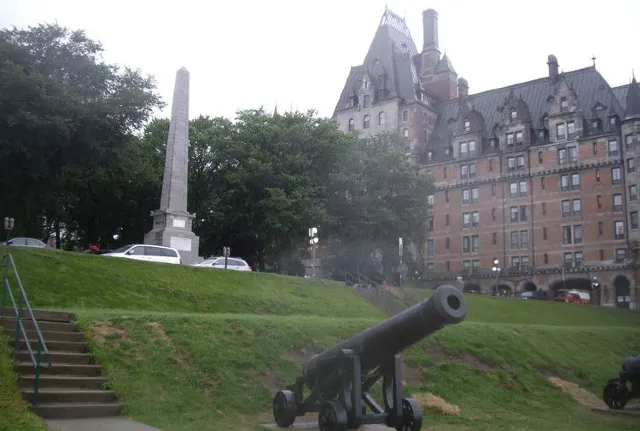
France and Britain were two powerful countries, who back in the 18th century wanted to dominate European trade. This led to the official conflict on North American grounds in early 1756, which waged on in three continents, mainly Europe, America, and Asia. At this time Québec was the capital of New France (the colonial empire of France in North America). It was also the only seat of the Catholic Diocese beyond Mexico in the North. This made the British determined to conquer this land, and they planned an invasion of the Rive St. Lawrence at the heart of New France. 30,000 soldiers and naval men were sent to capture the capital city.
The French, however, were left with few soldiers to fight this battle as their troops were waging war in continental Europe. The British navy made sure that French reinforcements would never get to the capital.
In June 1759 general James Wolfe and his men had made their way into Québec city waters. The entire summer was spent in futility trying to gain a foothold at North Shore. Being constantly repelled by general Louis-Joseph de Montcalm and his troops, the British troops began bombarding the city from the south shore. In September 1759, over 4000 British soldiers has scaled the cliffs of Cap Diamant to get to the headland known as ‘Abraham Heights’. In less than 30 minutes, the British troops were decimated and had to retreat into Beauport. Both generals leading the battle were mortally wounded, but Québec surrendered a few days later.
The siege left Québec city in an abysmal state, which was then fortified by the British as they understood it to be an important vantage point. The British, with their arrival, brought in a developed British Parliamentary system, Protestant communities, and a roaring lumber trade. Québec, even today, retains both French and English architectural and cultural traditions, making it a unique piece of land in the Americas.

The Plains of Abraham today have been transformed into lush greens, an urban park, that extends over a major portion of what was once the battlefields for both armies. The Joan of Arc garden is like a crowning jewel inside the park. It has over 150 flowering trees and plants that display a colourful presence and awe visitors with ease. Designed by landscape expert Louis Perron, it was to be a beautiful atmosphere for the Joan Of Arc statue that was installed there. At the centre of the rectangular plain, just above ground level, is the monument of Joan of Arc which is dedicated to the valour and courage of the war heroes of the 1759 battle.
The Plains of Abraham are to Québec city, what Hyde Park is to London and Central Park to New York city. It is an escape of greenery in the heart of the city. Having been the centre of many historic milestones over many centuries, this park is very dear to the residents of Québec city, and it certainly brings in scores of visitors during spring and summer.
The park has several greenhouses that are the oldest in the city. These greenhouses grow almost 45,000 biennial, annual, and perennial plants. The park has an “Open doors at the Greenhouse’ program annually where they give out free plants to the first few visitors. It is also a great way to learn more about herbs, planting techniques, urban agriculture techniques, etc. Programs, however, are conducted only in French.
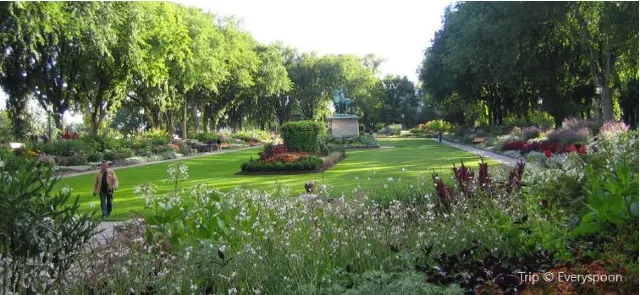
Ever since its inception, the Plains of Abraham have served as enormous playing field. For decades, the park has been used for winter sports such as tobogganing, snowshoeing, skating, skiing, and ice hockey. This park has the first covered skating rink in the world too. It is the place where the Québec Bulldogs historically won the Stanley Cup, twice. Horse shows too were popular here and pulled in massive crowds. The elite and glamorous class even enjoyed playing golf on the greens of the plains.
Even today, the public of Québec enjoys sporting activities in the Plains of Abraham. Cycling, soccer, football, hiking, jogging, skating, in-line skating, and cross-country skiing are some of the many sports and activities that people enjoy at the Battlefields Park. A 1km route allows people to enjoy a trail that is multi-purpose. The tracks are all free of charge, but permissions are required for use of playing fields and may sometimes require a fee as well.
In winters, 11.5km of trail are made available to skiers, 4 km of round trip trail for snowshoeing and 6.5 km for walkers. There are two heater rest rooms, a waxing room and a skaters’ chalet available for patrons. An ice rink is available c
lose to the Museum for which equipment can be rented at the Skaters’chalet.
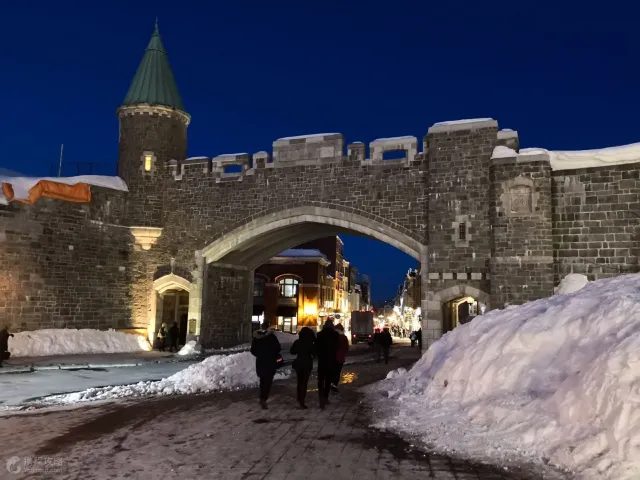
There are several concerts that happen on the grounds at the Plains of Abraham between June and August. The Edwin -Bélanger Bandstand hosts performances by budding artists as well as recognized talent. The Month of the Dead and Halloween celebrations happen full swing during October with activities like Garden Decoration, Haunted Towers, Tales of Bad Old Days, and the Ghoulish Walk happening at various locations across the plains.
The Haunted Tower experience brings in amazingly scary décor at the Martello towers, including scenes such as the mysterious forest or an astronomical laboratory. Tales of Bad old days is a show that speaks of horrors like witch hunts, fires, epidemics, and corporal punishment. The Ghoulish walk is an awesome and interactive walk down the trails at the Plains of Abraham at night, with lanterns in hand.
National holiday celebrations, too, are held with much fervour at the park grounds.
The Plains of Abraham Museum, better known as the Musée Nationel Des Beaux-arts Du Québec, is also the information centre and reception for the Parc Des Champs-de-Bataille. The place offers temporary exhibitions as well as permanent ones along with guided tours and a host of information about Canada’s first-ever historic park. Tours and outings can be planned through the museum too. Multimedia videos, movies and guided tours help visitors understand the deep and bloodied history of the Battlefields Park.
There are collections of uniforms, large maps, scale models, period replicas and interactive games at the museum. An immersive screening of the battle era will leave you feeling goosebumps. There are amazing artefacts that reveal how people in the 17th century lived their lives. Details about their housing layouts, communication systems, clothing, entertainment, work, food, and appearance, all come to light through the various exhibits. Civilian and military lifestyles have been tracked with over 100 artefacts that detailed the life and times of people over the past two hundred years. An interactive 3D experience of the parks history is offered to you via tablets at the Martello towers on their first three floors.
The museum organises a guided tour on the Abraham bus. This bus takes tourists to the following places at the park: the Joan of Arc Garden, Québec Citadel, barracks, Martello towers, the old jail, the reservoir, the site of the battle, and the path take by the British troops while entering the city.
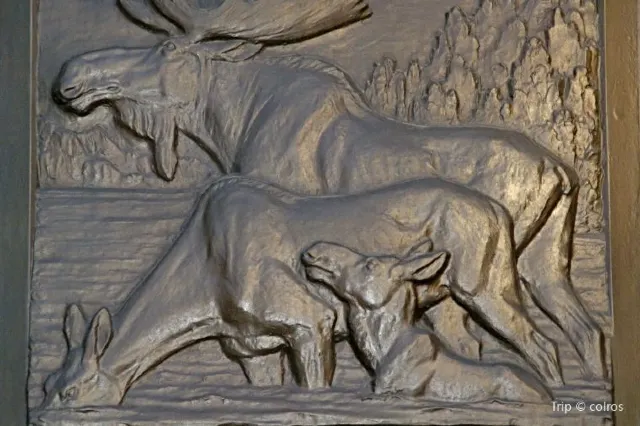
This mammoth festival known as Festival d’été de Québec, is an annual music festival that attracts an approximate crowd of 3,25,000 people over 11 days. The festival offers 250 shows across 10 venues on the plains and is known to be Canada’s biggest music festival. It attracts top new talent as well as international megastars who come and perform here. The festival kicks off at the beginning of July with music ranging from hip-hop to jazz, rock, electro, world music, and French songs. Big names like Billy Joel, Lady Gaga, Bon Jovi, Stevie Wonder, Keith Urban, Sting, Iron Maiden, Elton John, Bryan Adams, and Rammstein have all taken centre stage at the main venue, the Bell Stage.
Street performers too make the best out of this time of the year and the streets here are busiest at this time of the year, filled with fun activities and celebrations.
The festival began in 1968 when a group of business people and young artists began performing at the city’s public areas. It was in the early 80s that the festival truly broadened its horizons by adding an international flavour to it and inviting major internationally acclaimed musicians to perform.
Take the funicular to Chateau Frontenac. There is a set of stairs by Terrace Dufferin that go into the Plains of Abraham. Another way to get to the plains is by taking bus no.11 to hotel Concorde. This is very close to the Joan of Arc Gardens and you can start off your tour of the park right there. A cab from the cruise terminal is a short 4 km ride. There are other buses that will get you to the plains from different places in the province.
There are some fabulous restaurants in the nearby localities. Head over to Chez Gaston to try Poutine, which is the national food of Québec. Although any and all restaurants in Québec will serve this dish, Chez Gaston is known for their version topped with plump cheese. Aux Anciens Canadiens is a restaurant full of character as it is one of the oldest houses in Québec city. Try the smoked-bison parmesan fondue here. Chez Victor is one of the best places you can go to for a burger. You get everything from veg to venison burger at this place. Their stuffing like red pepper jam, brie, and dil mayonnaise are beyond par.
Cantook Coffee is an artisanal café with a variety of cold brews and coffees. They also have a good selection of puff pastries and other treats. Head off to La Planque for great service. This multi-level restaurant has great charred squid, creamy polenta, and other local options. They also serve cocktails with cider, maple syrup, mint, and rum. Echaude is a casual bistro that is almost always busy. They have excellent smoked salmon, potato cassoulet, and eggs with their weekend brunches. Try the maple waffles, dulce de leche, and caramelised pears if you have a sweet tooth.
Other top-notch museums to visit while in Québec city are:
The Musée de L’Amerique Francophone which is a collection of close to half a million items, all dedicated to the history of French-speaking North American. It hosts exhibitions about the colonial history of America and includes countless artwork accumulated by seminary priests over the last two centuries.
The Musée de la Civilisation is one of the most visited museums in Canada. It has wonderful exhibits and multimedia content about the aboriginal people who inhabited these regions. La Citadelle, also known as the Royal 22nd Regiment Museum is a collection of uniforms, weapons, decorations, and official documents from the early days of New France until the arrival of the 22nd regiment.
The Musée de Fort is located in front of the Chateau Frontenac. It talks about the history of Québec in a beautiful sound and lights show that lasts for 30 minutes. A 400 foot model of Québec city allows visitors to perceive the strategic importance of the city in the past few centuries.
Musée de La Place Royal is a place where you can explore the history of Québec with themed and guided visits with 3-D film help tourists understand the lives of people over the last few centuries.
Morrin Centre is the city’s first prison. It is over 2 centuries old, and visitors are exposed to military barracks that also house prisoners. The site also houses a gorgeous Victorian library that contains over 20,000 books. This library w=is the city’s sole English-language library.
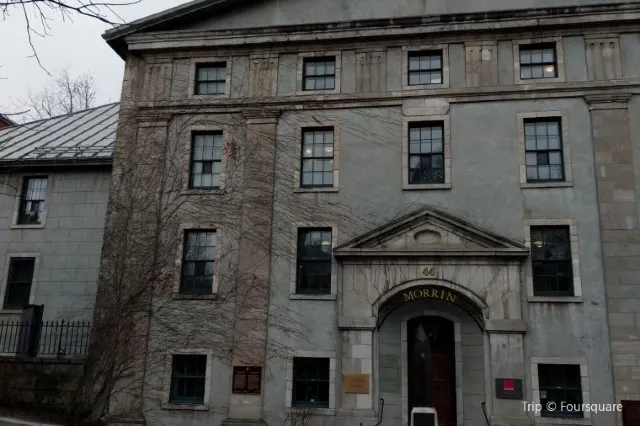
Take your time to explore and walk around the Plains of Abraham. Have a picnic in the lush greens, or simply take a bus ride and discover the history of Québec city over a few hours. Whatever you choose to do, you will certainly enjoy the culture, history, and the atmosphere in and around the Plains of Abraham. So make sure that you put this in your list of things to do in Québec.
Trending Travelogues
Popular Trip Moments
Popular Travel Types
Popular Attractions
Popular Destinations
Recommended Attractions at Popular Destinations







Site Operator: Trip.com Travel Singapore Pte. Ltd.






